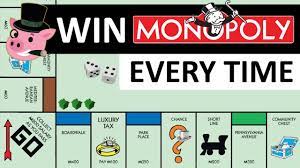Pocket Pairs

Pocket pairs are always a good play in any situation. But, are there situations where it would be better to fold pocket pairs? Lets find out.
When you have a pocket pair and there is a raise.
If you have a pocket pair, you will always have to act first to determine what to do. That means, you will always be behind a raise. For example, if you have pocket 9’s and there is a 4 bet and a flop of 9, K, 5, you will have to call to see the flop. Why? So you can see the action. If you don’t know what to do, you can always back out and wait for a better situation.
Unlike playing against a player who raises the pot in front of you, you are not forced to raise when you have a pocket pair. This allows you to make calls where you may be behind. For example, let’s say there was a raise of 3 times the big blind and you know you have a weak hand. If you are first to act, you can simply fold and you may even win the hand if your hand is weak.
When you flop a set, you will always want to try and see the flop. Sets are strong hands and, for the most part, even profitable. However, without seeing the flop, you have no idea whether your set hold or dealer ball. In other words, it doesn’t always mean you will make your hand.
The next example is similar – You see the flop with pocket Q’s. The initial raiser bets $100. You call, hoping for a free flop. The initial player keeps betting the pot, $100, $200, $300, $600, $900, $1200, $1500, and $2000. All of these numbers are well over the $600, $900, $1200, $1500, and $2000 mentioned before. Each time the initial player bets the pot, you add the amount of your call to the pot, along with the $100 that the initial player must bet.
It looks like this – 1, 2, 3, 4, 5, and 6. Then the dealer starts turning over three community board cards. You know that you have either a set or a drawing hand. Because there are more than two players in the hand, there are more ways for the initial player to hurt his hand. Therefore, you raise the amount of your bet. Now, the initial player doesn’t like this at all because it increases the amount of money he has to put in. What he wants to do is figure out what the worst possible hand is. A quick estimate will probably do. Essentially, he needs to think that there are more than two players in the hand and that he and the first player have the same hand. Let’s say he is unsure of the exact hand and makes a decision. Then, he may keep betting as long as he has ” pokerace99” still to go.
Now, the initial player has shown his strength. He has $600 in front of him, and the second player only has $300. Should the second player call $600 for the right to see the river card? Let’s say he calls, what this means is that the second player will have to aforementioned $600 to see the river card whether the first player wins or loses the hand. In terms of odds, the pot odds are 6:1, so the reward is 1.5 to 1. The odds are not even. However, the right decision for the second player is not advisable because his goal is to keep the pot odds positive, which they are not, not negative. In other words, whatever decision the second player makes, the second player will not be improving his odds. It is recommended that the second player stick to calling minimum bets until proven otherwise.
For the initial player, on the other hand, their goal is to win the big pots to get the easy money. They don’t necessarily care that much what the other players in the hand do. They are just hoping that the two holdem players in the hand do not have as strong hands as they do and fold the hand or re-raise the pot to kill the odds for the second player.
The initial player has a 36% of winning the money in the pot if both of the other players fold, and then they also have to take the other players chips out of the pot before they do anything. The two holdem players each have $500 to start the hand. The player in the big blind has $300. Players do not know the other private cards of the two players, and if they do, they are not obligated to act in any way.


